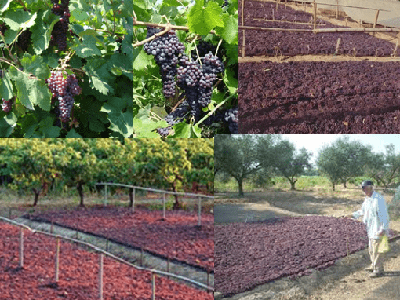Today, the Corinthian raisin is cultivated, the center of cultivation of which is the northern and western Peloponnese, and the sultana, which is widespread mainly in the Heraklion prefecture of Crete. The Corinthian variety produces the small-sized “black” raisin, while the larger “blonde” raisin is produced from the sultana.
The Sultanina variety is of Asian origin and comes from the “Sultanieh” region of northern Iran from where it was introduced and cultivated in the 12th century in the Hermos River valley (Magnesia of Asia Minor). From there it spread to the area of Smyrna and the rest of the coast of Ionia. The sultana was introduced from Smyrna to the Nafplion area in 1838 and from there its cultivation spread to the Argolis region and in 1901 it began to be cultivated in Crete as well.

